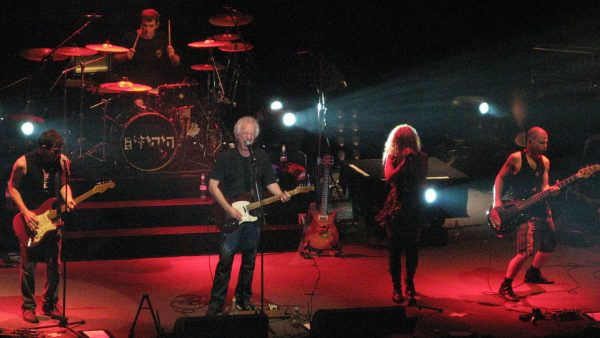From the Archive: Germany’s anti-Semitism (and anti-Semitic) education
Published September 12, 2014

Ten- and eleven-year-old schoolchildren doing the “Heil Hitler” salute in Berlin, 1934. (German Federal Archive, Licensed under Creative Commons)
In the aftermath of a spike in anti-Semitic incidents during the recent Israel-Hamas conflict, primarily instigated by Muslim youth, Germany has announced that it will fund anti-Semitism (or, anti-anti-Semitism) education for its Muslim students.
The Krauts have come a long way from their famously sordid history of anti-Semitism. Much of their mid-20th century anti-Semitism arose from a very different type of education than what is being proposed today.
Nearly 80 years ago, in 1935, the newly formed Reich Institute for the History of New Germany was working to install “scientific anti-Semitism” as a compulsory subject in all German schools.
The institute’s president, Dr. Walter Frank, announced that his organization was working to “bring scientific clarity to bear on a racial basis in the solution of such tremendous problems as the Jewish question constitutes.”
Just a week before Frank’s elucidation on the science of anti-Semitism, the commissariat of education in Saxony updated his state’s education curriculum to include the Nuremberg Laws — exclusionary laws codifying anti-Semitism — as mandatory learning.
But that was nothing compared to the prayers directed against the “aliens to our race, the Jews who demoralize the German people,” introduced into schools in Thuringia five years earlier (the prayers were quickly banned by the Thuringian State Tribunal). There was no ban, however, on the 1934 demand that all children in Thuringian schools produce certificates proving that their parents and grandparents were Aryan.
Little over a year later, the Hitler Youth — the sole official youth organization in Germany — announced that its members must attend courses devoted to racial subjects. The JTA broke coverage of the announcement, which stipulated that the organization’s leaders must qualify in special examinations and gain a diploma in racial science “in order to be able to speak on all questions of Nazi racial policy.”
In 1940, the newest innovation in anti-Semitic education came by way of puppet performances. The Nazi newspaper Muenchener Neuste Nachrichten reported that the performances were being given for children in the Reich “to illustrate how the Jewish problem must be solved.” The plays ended with puppets dancing to celebrate the disappearance of the Jews.
Also in 1940, German film authorities announced the completion of the Nazi version of the movie “Jew Suess,” advertising it as the “first German anti-Semitic film.” The film’s leading actor was promised an award from Propaganda Minister Joseph Goebbels “in special recognition for agreeing to play such a loathsome role.”
Germany’s new anti-Semitism education, of course, will work to combat anti-Semitic attitudes, not foment them. It’s a commendable effort from a country determined not to repeat the past — let’s just hope that there aren’t any puppet shows this time.
![]()























